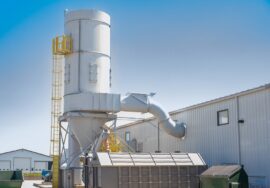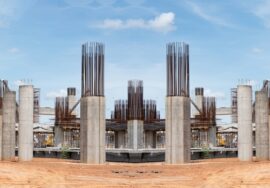
Sustainable Building Techniques for a Greener Future
Sustainable Building Techniques for a Greener Future
As the world faces growing environmental challenges, the construction industry is evolving to adopt more sustainable building techniques. These techniques focus on reducing waste, saving energy, and using environmentally friendly materials to create structures that are efficient, durable, and harmonious with nature.
From design to demolition, every stage of construction can benefit from sustainable building techniques that prioritize environmental responsibility and resource efficiency.
What Are Sustainable Building Techniques?
Sustainable building techniques refer to innovative construction practices that minimize the negative impact of buildings on the environment while maximizing efficiency and occupant well-being. These methods integrate eco-friendly materials, energy-efficient technologies, and green construction practices.
The primary goal of sustainable building techniques is to balance human comfort and environmental preservation by optimizing the use of energy, water, and resources. They align closely with the principles of LEED certification and green architecture.
Key Sustainable Building Techniques
The use of sustainable building techniques is transforming how we design and construct modern infrastructure. Here are some of the most effective and widely used methods:
1. Passive Design Strategies
Passive design uses natural elements—such as sunlight, airflow, and thermal mass—to regulate indoor temperature. This reduces reliance on artificial heating and cooling systems, improving energy efficiency.
2. Use of Eco-Friendly Materials
Choosing eco-friendly construction materials like bamboo, recycled steel, and fly ash bricks lowers the carbon footprint of a project. Locally sourced materials further minimize transportation emissions.
3. Energy Efficiency and Renewable Energy
Incorporating solar panels, LED lighting, and energy-efficient HVAC systems helps reduce energy consumption. Renewable energy sources make buildings more sustainable and cost-effective in the long run.
4. Water Conservation Systems
Techniques like rainwater harvesting and greywater recycling are crucial sustainable building techniques that conserve valuable water resources.
5. Waste Management and Recycling
Implementing waste management in construction ensures that leftover materials are reused or recycled, reducing landfill waste and promoting a circular economy.
6. Smart Building Technology
Integrating sensors, automation systems, and IoT devices enables real-time monitoring of resource use, helping improve overall building performance.
Benefits of Sustainable Building Techniques
Using sustainable building techniques provides several environmental, economic, and social benefits:
-
Environmental Protection: Reduces pollution and resource depletion.
-
Energy Savings: Improves efficiency and lowers operational costs.
-
Healthier Indoor Spaces: Enhances indoor air quality through natural ventilation and low-VOC materials.
-
Long-Term Durability: Increases the lifespan of buildings and reduces maintenance costs.
-
Regulatory Compliance: Meets sustainability standards set by organizations like IGBC (Indian Green Building Council).
Overall, these techniques support a holistic approach to sustainable construction methods and urban development.
Sustainable Building Techniques in India
India is rapidly adopting sustainable building techniques to meet its environmental goals. The government’s initiatives like the Green Rating for Integrated Habitat Assessment (GRIHA) and Energy Conservation Building Code (ECBC) promote energy efficiency and eco-friendly construction.
Many Indian cities are witnessing an increase in net-zero energy buildings and low-emission construction practices. These initiatives not only reduce carbon emissions but also promote healthier and more resilient communities.
How to Implement Sustainable Building Techniques
To effectively implement sustainable building techniques, project managers and developers should:
-
Conduct a Life Cycle Assessment (LCA): Evaluate the environmental impact of materials and construction processes.
-
Plan Efficiently: Incorporate sustainability during the design and planning stage.
-
Use Renewable Resources: Opt for materials that can be recycled or renewed.
-
Engage Certified Professionals: Work with architects and engineers experienced in green construction practices.
-
Monitor and Maintain: Continuously assess energy use, water conservation, and waste management.
These steps ensure that sustainability is integrated throughout the entire construction process — from design to completion.

Partner with AMS India for Sustainable Solutions
At AMS India, we specialize in eco-friendly and efficient construction practices. Our expertise in sustainable building ensures that every project aligns with global green standards while optimizing performance and cost.
Whether it’s commercial, residential, or industrial development, AMS India helps clients build smart, sustainable, and future-ready structures.
Conclusion
The adoption of sustainable building marks a pivotal shift in how the world constructs its future. By integrating renewable energy, smart technologies, and eco-conscious design, the construction industry can significantly reduce its environmental footprint.
As more developers embrace these practices, sustainable building will continue to redefine the way we build — ensuring a greener, cleaner, and more resilient planet for generations to come.
Read more related articles to enhance your knowledge and make informed decisions
Cost-Effective Modular Construction: Fast, and Sustainable Building Solutions
Smart Modular Buildings: Innovative, Efficient, and Sustainable Construction








